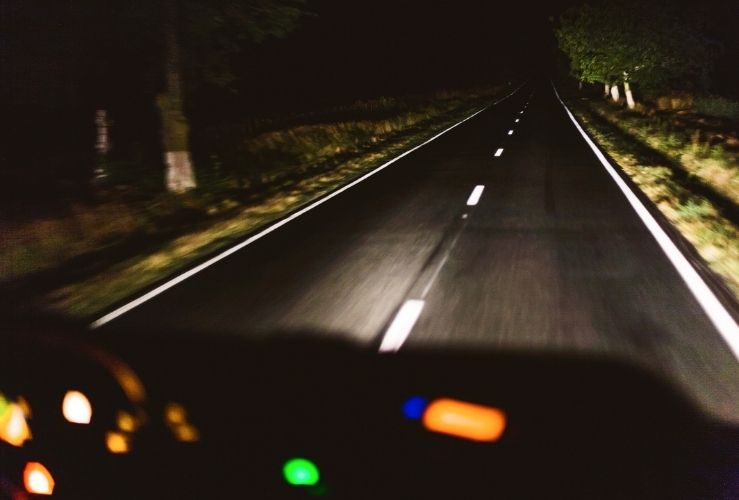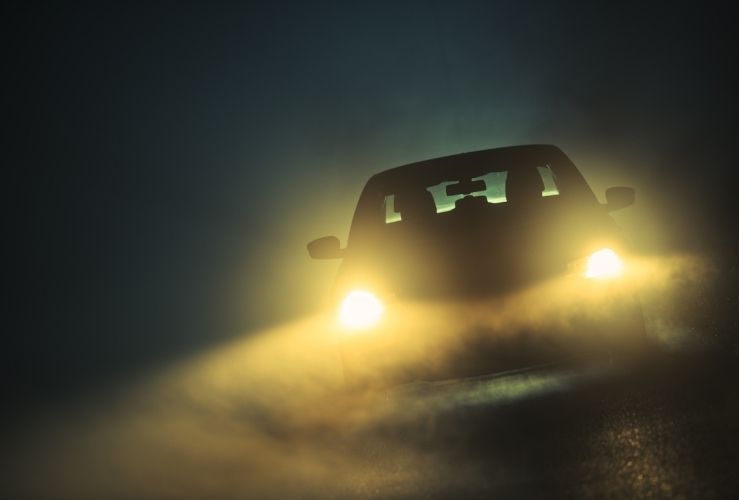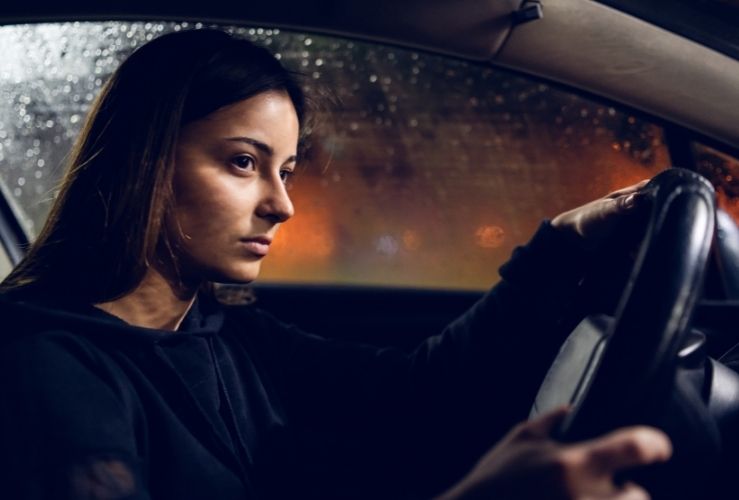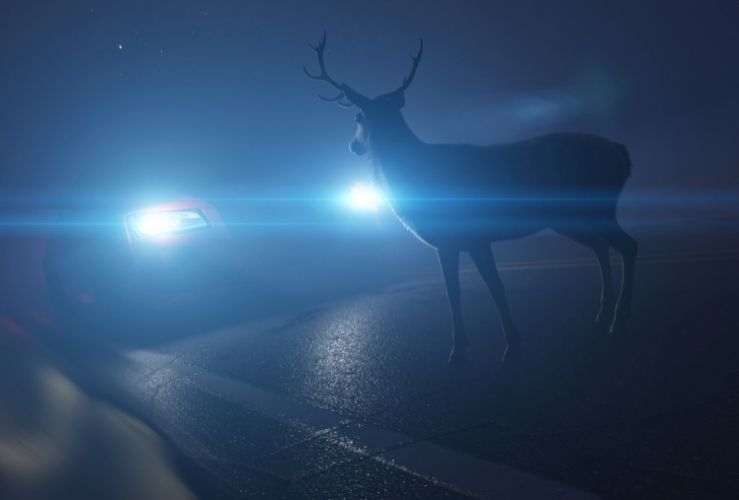It may come as no surprise that 40% of all collisions take place in the dark, according to the Royal Society for the Prevention of Accidents (ROSPA). The Society also found that 20% of serious accidents on motorways and monotonous roads are caused by motorists falling asleep at the wheel.
However, there are a number of things you can do to reduce the chances of a collision at night.
- Use headlights with good timing - an hour before sunrise and an hour before sunset
- Use full beam headlights wisely - don't dazzle other road users
- Keep your windscreen clean - avoid glare
- Ensure your night vision is working well
- Train your eyes on the road ahead
- Drive defensively - watch out for others' poor driving
- Slow down - give yourself more time to react to hazards
- Take regular breaks, avoid longer night drives
- Watch out for wildlife and other animals

Turn on your headlights an hour before sunset, and an hour before sunrise - this makes it easier for other vehicles to
see you. Ensure your outside lights are working properly, and that they are clean and undamaged, since this creates glare for other road users. Ensure your inside lights are off. Using interior lights can distract the driver, and creates glare on the windscreen that makes it harder to see outside.
When out on countryside roads, aim to use full beam lights whenever it is safe to do so. This makes it easier to spot hazards ahead of your vehicle. However, ensure you dim your headlights when another car is approaching, since full beam lights could dazzle the other driver, potentially putting them - and you - in danger.
If you find yourself dazzled by another vehicle's headlamps, keep your speed steady and remain close to the left-hand side of the road. Avoid looking directly at the oncoming lights.

Grimy or damaged windscreens make it more difficult to see other road users, scattering the light and increasing the effects of glare.

While your day time eyesight may be working fine, your night vision may not. It's important to have regular eyesight check ups to ensure your eyes can read the road ahead in low light and night time conditions. And of course, never wear dark lenses in low-light conditions.
Scan the horizon for glimmers of light that may be oncoming headlights. Also keep careful watch for cyclists and pedestrians - who can be trickier to spot after dark.
Incidents of drink driving are more common at night, so it's important to drive defensively and expect more erratic driving once the sun goes down. And it goes without saying that avoiding alcohol before driving is essential.
Reducing your speed gives you more time to react if a hazard appears.
You naturally feel more drowsy between midnight and 6am - the period when our ancestors would have been sleeping. With this in mind, take a break if you need one, and top up with coffee or other caffeinated beverages to help you stay alert. Also be aware that "drowsy driving" may be more likely among other drivers. Avoid longer night time trips if possible.
If visibility has been reduced by fog or mist, consider delaying your journey if you can.

Those who live in rural locations are more likely to encounter wildlife on the roads than those who live in built up areas. Rural locations such as national parks and many areas of Scotland and Wales are home to deer, pheasants, badgers, foxes, rabbits and hedgehogs, all of which - sadly - often get hit by vehicles. Reducing your speed and remaining alert will help you avoid hitting such wildlife. According to the Highway Code, if you’re involved in a collision with any of the following animals, you must inform the police within 24 hours: dogs, horses, cattle, pigs, goats, sheep and donkeys/mules.
If you’re considering a job that involves driving at night - such as a lorry driver, courier, or taxi driver - then you might benefit from a night driving safety course. A Google search will present some potential options.




